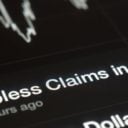
Adding to a laundry list of corrupt, despotic actions taken by the federal government to ensure the reelection of Barack Obama, a new report shows the final unemployment rate calculated before the 2012 presidential election, was fake.
From August to September, the unemployment rate unexpectedly fell and it fell dramatically, from 8.1 percent in August to 7.8 percent in September. The impossible drop baffled experts, leading former CEO of GE Jack Welch to tweet, “amazing what these Chicago guys will do to win election. Can’t debate, so fudge numbers.”
Welch refused to back down from his accusation that the Obama administration faked the numbers, numbers which according to a reliable source for the New York Post, were in fact manipulated.
As if the likelihood of a rogue employee taking it upon themselves wasn’t nil enough, the Census Bureau, which is the bureaucracy that conducts the survey used to measure the unemployment rate, was well-aware of it.
Apparently, two years before the 2012 presidential election, the Census Bureau actually caught one employee making up pertinent data used in the report to calculate the unemployment rate.
And a knowledgeable source says the deception went beyond that one employee — that it escalated at the time President Obama was seeking reelection in 2012 and continues today.
“He’s not the only one,” said the source, who asked to remain anonymous for now but is willing to talk with the Labor Department and Congress if asked.
The Census employee that was caught faking the results is Julius Buckmon, according to confidential Census documents obtained by The Post. Buckmon told me in an interview this past weekend that he was told to make up information by higher-ups at Census.
Ironically, it was Labor’s demanding standards that left the door open to manipulation.
Labor requires Census to achieve a 90 percent success rate on its interviews — meaning it needed to reach 9 out of 10 households targeted and report back on their jobs status.
Census currently has six regions from which surveys are conducted. The New York and Philadelphia regions, I’m told, had been coming up short of the 90 percent standard.
Philadelphia filled the gap with fake interviews. “It was a phone conversation — I forget the exact words — but it was, ‘Go ahead and fabricate it’ to make it what it was,” Buckmon stated.
Census, under contract from the Labor Department, conducts the household survey used to calculate the unemployment rate.
Interviews with sixty thousand households are entered into each month’s jobless number, currently standing at 7.3 percent. This is a scientific poll, thus each household interviewed represents five thousand homes in the United States.
Buckmon, conducted three times as many household interviews as his peers and took it upon himself to fill out survey for the people that did not answer their doors or who he could not reach by phone.
Furthermore, he was never instructed how to answer the questions regarding these nonexistent people, if they were employed, unemployed, looking for work, or had forgone the search altogether.
The unemployment rate is the most closely watched economic number. By making up survey results — and, essentially, creating people out of thin air and giving them jobs — Buckmon’s actions could have lowered the jobless rate.
The people that are aware of the schematics of the survey understand that by simply creating individuals and filling out the surveys in their name would increase the number of people reported as employed.
Even though there were more than a dozen falsifications reported according to internal documents, Census only investigated a handful of these instances such as the one by Buckmon.
The Labor Department did not inform anyone that the data was “fudged” and Census never publicly disclosed the falsification. Labor spokesman stated, “yes, absolutely they should have told us, it would be normal procedure to notify us if there is a problem with data collection.”
Program Coordinator Joal Crosby was asked why there was not an investigation in each region that was suspected of false data. It was reported that Crosby was unable to determine why an investigation was not done for CPS. The Consumer Expenditure Survey investigated four out of the fourteen instances reported.
Manipulating said data is dangerous because important regulations and monitory policy laws decisions are based upon reports such as these. It is supposed to give the administrators, lawmakers, business owners insight on how to proceed economically.
Not to mention it manipulates Americans as well, giving the people the wrong impression of the president’s effectiveness, especially since he repeatedly campaigned that he would create more jobs.






